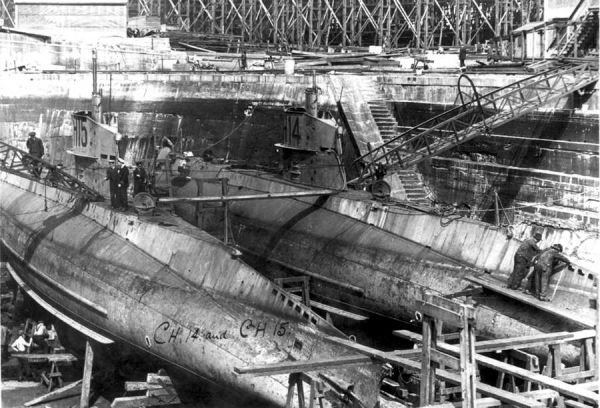Timeline: 1910-1919
Post World War I
|
1910-1919
|
|||||||||||||||||
|
|||||||||||||||||
By the 12th of Dec 1918 both CC1 and CC2 had been paid off to reserve.
The demobilization of officers and men who had enrolled for service during the war had been practically completed by the 15th of May, 1919. After that date, only those officers and men needed for existing ships and establishments were retained. A complement of 500 was authorized, and by the end of the year it had been filled.
Two US built “H” class submarines are given by the Admiralty to Canada and were commissioned as CH14 and CH15 in June 1919.
Admiral of the Fleet Lord Jellicoe arrived in Esquimalt to begin review of Canadian Naval defence requirements on the 8th of November 1919. By the 13th of December 1919, the Jellicoe Report was presented to the Governor-General. It stated that Canadian naval defence could be looked at in two ways:
a. Defence of Canadian ports and trade would require a purely defensive force of 3 light cruisers, a flotilla leader ( a flotilla leader being a vessel with extra accommodation for the commanding officer of the flotilla and his staff), 12 torpedo craft, 8 submarines with a parent ship, and certain auxiliary small craft for training purposes; and
b. For participation in imperial defence, in addition to the defensive force, either one or two fleet units each of which by itself would be a complete and versatile naval force. This fleet would consist of a battle-cruiser, 2 light cruisers, 6 destroyers, 4 submarines, 2 fleet minesweepers, an aircraft carrier and certain additional vessels including a depot ship and a flotilla leader for the destroyers, and a parent ship for the submarines.

CH14 and CH15 in Dry Dock
